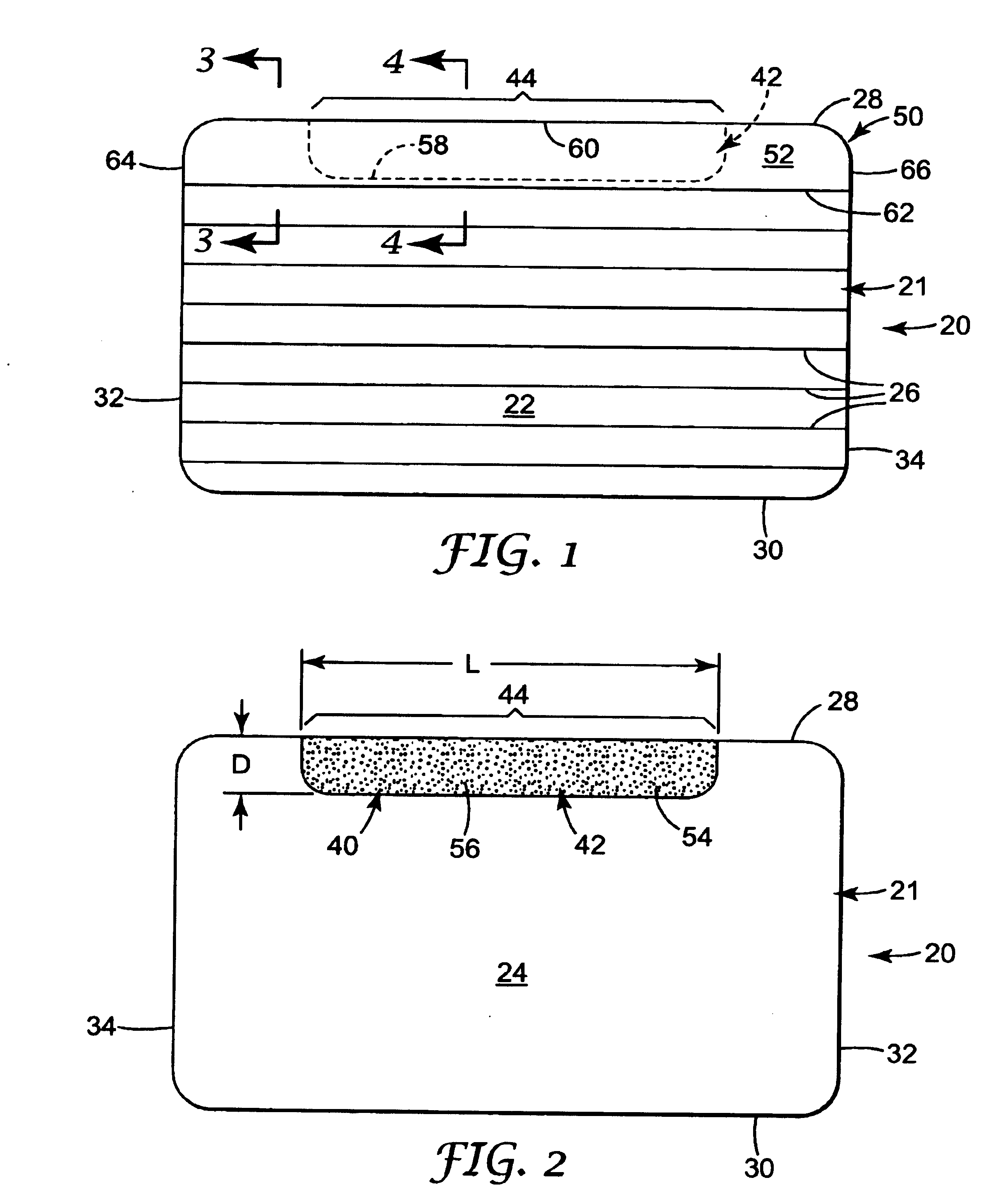Article with selectively activated adhesive
a selective activated adhesive and adhesive technology, applied in the field of articles, can solve the problems of not being easily shuffled or rearrangeabl
- Summary
- Abstract
- Description
- Claims
- Application Information
AI Technical Summary
Benefits of technology
Problems solved by technology
Method used
Image
Examples
Embodiment Construction
[0024] In sheet form, a substrate has two major sides. FIGS. 1 and 2 illustrate a sheet in the form of an index card 20 defined by a base layer 21 of material having a front side 22 and an opposite back side 24. Typically, both sides are writeable, i.e., adapted to accept writing or other indicia from a pencil, pen, high lighter, crayon, or from other indicia forming articles such as a printer. An index card will typically have, on one side (such as front side 22), a plurality of ruled lines 26 pre-printed thereon. The base layer 21 has an upper edge 28, lower edge 30, and left and right side edges 32 and 34, respectively.
[0025] A typical index card is made of paper, such as 90 pound weight paper, and is 0.0075 inches thick. Index cards come in two typical sizes, 3×5 inches and 4×6 inches. An index card may have rounded edges (such as illustrated in FIGS. 1 and 2), or may have squared off corners.
[0026] The base layer 21 may be formed from sheet material such as paper, card stock,...
PUM
| Property | Measurement | Unit |
|---|---|---|
| thick | aaaaa | aaaaa |
| sizes | aaaaa | aaaaa |
| sizes | aaaaa | aaaaa |
Abstract
Description
Claims
Application Information
 Login to View More
Login to View More - R&D
- Intellectual Property
- Life Sciences
- Materials
- Tech Scout
- Unparalleled Data Quality
- Higher Quality Content
- 60% Fewer Hallucinations
Browse by: Latest US Patents, China's latest patents, Technical Efficacy Thesaurus, Application Domain, Technology Topic, Popular Technical Reports.
© 2025 PatSnap. All rights reserved.Legal|Privacy policy|Modern Slavery Act Transparency Statement|Sitemap|About US| Contact US: help@patsnap.com



